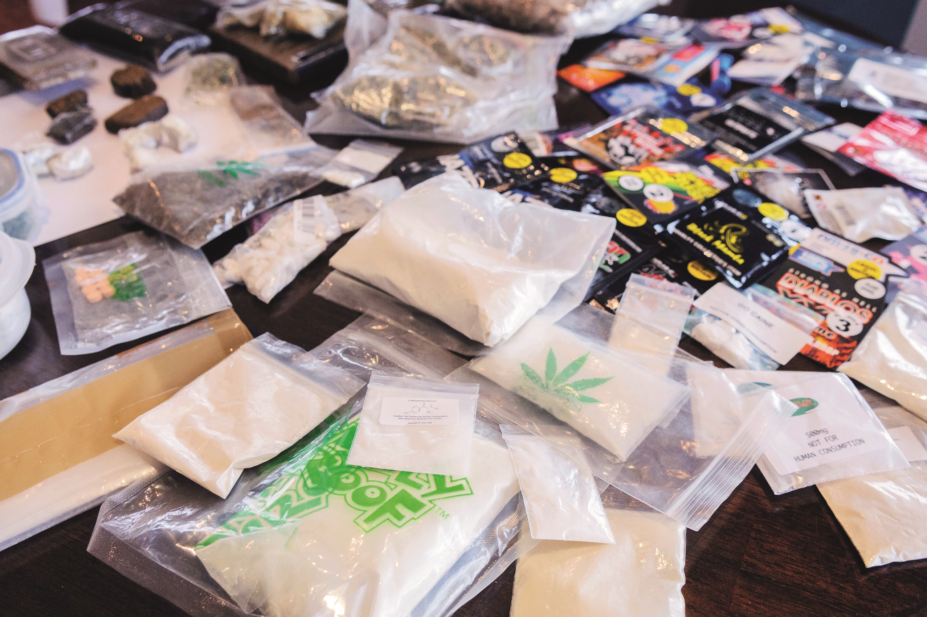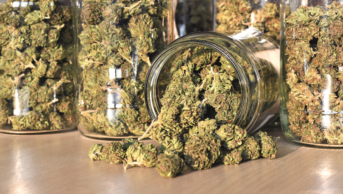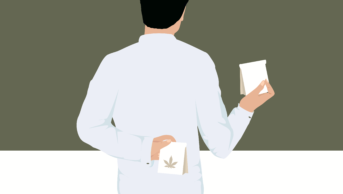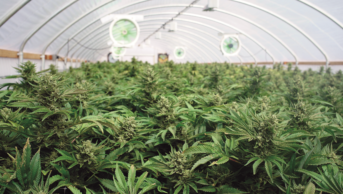
Alamy
Over the past ten years, a new trend has emerged in drug use: novel (or new) psychoactive substances (NPSs). These substitute substances — often incorrectly referred to as ‘legal highs’ — are designed to mimic the pharmacological effects of illicit drugs such as cocaine and heroin. Many are not controlled under either the Single Convention on Narcotic Drugs of 1961, as amended by the 1972 Protocol, or the Convention on Psychotropic Substances of 1971 — both of which are international treaties to control harmful drugs.
The UK Psychoactive Substances Act (UK PSA) 2016, which was introduced by Theresa May’s government as a blanket ban on all psychoactive substances, describes an NPS as “any substance which is capable of producing a psychoactive effect in a person who consumes it”. Under the legislation, it is illegal to produce, supply or offer to supply, possess with intent to supply, and import or export a psychoactive substance for human consumption. In line with the UK’s 2017 drug strategy, the Act will be reviewed by the Home Office in January 2019, 30 months after its implementation date[1]
.
Growing drug market
The NPS phenomenon is thought to have emerged and proliferated owing to shortages, increased prices and poor quality of illicit drugs. And the market’s sustained growth may also be a result of the success of internet marketing. To circumvent legislative controls over illicit drugs and their precursors, clandestine chemists structurally modify substances to create ‘legal’ alternatives that act in a similar way to the substances they mimic or resynthesise failed patents from published scientific literature[2]
.
The NPS market is complex owing to the drugs’ chemical diversity, continued diffusion, various acronyms, brands, formulations and intake practices, and unpredictable adverse effects
The struggle to classify
By the end of 2017, more than 800 NPSs were reported to the United Nations Office on Drugs and Crimes (UNODC); at an average of 1 NPS reported per week since 2009, more NPSs are entering the market than leaving it[2]
. Owing to the large number of NPSs, many organisations have classified them to enable their identification. The UNODC has recently classified NPSs into six categories: sedatives/hypnotics (for example, benzodiazepine-type NPS); dissociatives (for example, deschloroketamine); hallucinogens (for example, 25I-NBOMe); stimulants (for example, dimethylcathinone), synthetic cannabinoid receptor agonists (SCRAs) (for example, AB-PINACA) and opioids (for example, ocfentanil)[2]
,[3]
. The NPS market is complex owing to the drugs’ chemical diversity, continued diffusion, various acronyms, brands, formulations and intake practices, and unpredictable adverse effects. Detection of previously unknown substances or closely related derivatives requires expert analysis; identifying and classifying an unknown substance is therefore difficult, and first responders face unpredictable challenges.
The landscape since the 2016 legislation
Following the implementation of the UK PSA in 2016, NPSs remained in the market alongside traditional drugs of abuse[2]
. Trade of NPSs has moved from the surface to the deep web, and from high street shops to the black market. At music festivals, many ecstasy products (tablets and crystals) have been found to contain NPS mixtures (for example, pentylone and N-ethylpentylone)[4]
and have taken the lives of a few attendees in 2018.
Popular NPS recipes and peer review forums are easily accessible online. Poorer quality and more potent NPSs have made their way to the streets, affecting many vulnerable and socially marginalised people and leading to inadvertent overdoses and other drug-related harms.
Certain NPS classes have gained popularity among particular user groups. ‘Spice’ (branded mixtures of SCRAs and bulking agents) has become popular among prisoners and the homeless because it cannot be detected with conventional drug-testing tools. These people, who may feel vulnerable and prone to attacks, may use Spice to numb the senses and give a feeling of warmth[5]
. Some individuals who are in treatment for opioid addiction are also using NPSs. Gittins et al. have shown an increase in undisclosed NPS use by individuals in treatment for substance misuse; these individuals are also able to evade detection of their NPS use during drug tests[6]
.
Harm and substance abuse
A few NPS classes — opioids, SCRAs and benzodiazepines — have become associated with increasing drug-related harms and substance use disorders.
Opioids
The opioid epidemic in the United States is thought to have led to the widespread emergence of opioid misuse across Europe[7]
. It has also been suggested that heroin shortages in Europe in 2015 drove this phenomenon. Novel opioids account for 4% of newly emerging substances but are associated with greater harm than any other NPS category. They have been seen as adulterants in heroin batches or incorporated in counterfeit medicines, but are now also available as e-liquids and nasal sprays. Some products sold as Xanax benzodiazepine tablets have been shown to incorporate cyclopropylfentanyl[8]
. The high potency of the substances can lead to inadvertent overdose and death caused by respiratory depression.
Synthetic cannabinoid receptor agonists
In 2016, SCRAs were the most frequently seized NPSs in Europe and accounted for nearly half of the total number of reported seizures caused by an NPS[7]
. SCRAs — developed as ‘legal’ alternatives to controlled cannabis — have gained popularity since their emergence in 2009, and more than 180 SCRAs have been identified to date in Europe[8]
.
SCRAs may be sprayed on to herbal mixtures in a non-uniform fashion, creating hotspots that can lead to inadvertent overdoses. Like opioids, emerging SCRAs are increasing in potency and have been associated with mass poisoning outbreaks; Spice’s popularity in Manchester led to a so-called ‘zombie epidemic’ in 2017, during which the city was overwhelmed by users in ‘zombie-like’ states.
The number of rapidly acting benzodiazepine-type NPSs — such as those mimicking diazepam and alprazolam — has increased dramatically since 2017
Benzodiazepines
The number of rapidly acting benzodiazepine-type NPSs — such as those mimicking diazepam and alprazolam — has increased dramatically since 2017. Controls over prescribed benzodiazepines may have driven the emergence of unlicensed benzodiazepines, such as etizolam, in the UK market and the misuse of Z-drugs[9]
,[10]
. Research has shown increasing misuse of benzodiazepines among high-risk opioid users[11]
. By enhancing the inhibitory effects of the neurotransmitter gamma-aminobutyric acid (GABA), benzodiazepines can prolong and enhance the effect of co-consumed opioids.
What pharmacists can do
Pharmacists can and should play an important role in reducing NPS-related harms. This area of substance misuse is a relatively new area that has not conventionally been studied in undergraduate pharmacy programmes; however, many educational (clinical and non-clinical) resources are available, such as:
- The summary fact sheet, quick reference guide and Medicines, Ethics and Practice (2018) from the Royal Pharmaceutical Society[12]
,[13]
,[14]
; - Guidelines and e-modules from the Novel Psychoactive Treatment UK Network[15]
,[16]
,[17]
; - Learning programmes and assessments from the Centre for Pharmacy Postgraduate Education[18]
; - Drug analytical data in Clarke’s Analysis of Drugs and Poisons
[19]
; - The resource pack from the Home Office[20]
.
Pharmacists should identify and alert stakeholders to prescription drug misuse[21]
and consider possible NPS use when completing medicines reconciliations. They should also report adverse effects that may be related to misuse of drugs to Report Illicit Drug Reactions (more commonly known as RIDR)[22]
— the Yellow Card scheme equivalent. Pharmacists can monitor ill health and make appropriate referrals to health and social services, which may prevent patients from self-medicating and buying medicines via non-legitimate pharmacies over the internet or obtaining health advice from drug forums. NPSs continue to pose public health risks; pharmacists can have a role in preventing NPS-related harms.
Amira Guirguis, pharmacist and senior lecturer in pharmaceutical chemistry, Psychopharmacology, Drug Misuse and Novel Psychoactive Substances Research Unit, University of Hertfordshire. Correspondence to: a.guirguis2@herts.ac.uk
References
[1] Rudd A. 2017 Drug Strategy. HM Government. 2017. Available at: https://www.gov.uk/government/publications/drug-strategy-2017 (accessed October 2018)
[2] United Nations Office on Drugs and Crime. World Drug Report 2018: Executive summary: conclusions and policy implications. 2018. Available at: https://www.unodc.org/wdr2018/prelaunch/WDR18_Booklet_1_EXSUM.pdf (accessed October 2018)
[3] European Monitoring Centre for Drugs and Drug Addiction. European drug report: trends and developments. 2018. Available at: http://www.emcdda.europa.eu/system/files/publications/8585/20181816_TDAT18001ENN_PDF.pdf (accessed October 2018)
[4] Robert J. ‘Fake MDMA’ sold at Bestival kept people awake for 96 hours. Metro 8 August 2018. Available at: https://metro.co.uk/2018/08/08/fake-mdma-sold-bestival-kept-people-96-hours-7813914/ (accessed September 2018)
[5] Ralphs R & Gray P. New psychoactive substances: new service provider challenges. Drugs: Education, Prevention and Policy 2018;25(4):301–312. doi: 10.1080/09687637.2017.1417352
[6] Gittins R, Guirguis A, Schifano F et al. Exploration of the use of new psychoactive substances by individuals in treatment for substance misuse in the UK. Brain Sci 2018;8(4):58. doi: 10.3390/brainsci8040058
[7] European Monitoring Centre for Drugs and Drug Addiction. Fentanils and synthetic cannabinoids: driving greater complexity into the drug situation. 2018. Available at: http://www.emcdda.europa.eu/system/files/publications/8870/2018-2489-td0118414enn.pdf (accessed October 2018)
[8] European Monitoring Centre for Drugs and Drug Addiction. European Database on New Drugs. 2018 (access restricted to registered users only)
[9] Guirguis A, Girotto S, Berti B et al. Evaluation of two laser sources, 785 and 1064 nm, for the identification of new psychoactive substances using handheld Raman spectroscopy. Forensic Sci Int 2017;273:113–123. doi: 10.1016/j.forsciint.2017.01.027
[10] Victorri-Vigneau C, Gérardin M, Rousselet M et al. An update on zolpidem abuse and dependence.J Addict Dis 2014;33(1):15–23. doi: 10.1080/10550887.2014.882725
[11] European Monitoring Centre for Drugs and Drug Addiction. The misuse of benzodiazepines among high-risk opioid users in Europe. 2018. Available at: http://www.emcdda.europa.eu/topics/pods/benzodiazepines (accessed October 2018)
[12] Guirguis A, Hawksworth G, Bond C et al. New psychoactive substances: A guide for pharmacists (summary fact sheet). Royal Pharmaceutical Society. 2018. Available at: https://www.rpharms.com/Portals/0/RPS%20document%20library/Open%20access/Science/RPS%20NPS%20Fact%20sheet.pdf?ver=2018-06-18-141822-160 (accessed October 2018)
[13] Guirguis A, Hawksworth G, Bond C et al. New psychoactive substances (NPS): Quick reference guide. Royal Pharmaceutical Society. 2018. Available at: https://www.rpharms.com/resources/quick-reference-guides/new-psychoactive-substances (accessed October 2018)
[14] Royal Pharmaceutical Society. Medicines, Ethics and Practice (MEP) 42. 2018. Available at: https://www.rpharms.com/resources/publications/medicines-ethics-and-practice-mep (accessed September 2018)
[15] Abdulrahim D & Bowden-Jones O, on behalf of the NEPTUNE (Novel Psychoactive Treatment UK Network) Expert Group. Guidance on the management of acute and chronic harms of club drugs and novel psychoactive substances. 2015. Available at: www.emcdda.europa.eu/attachements.cfm/att_236560_EN_UK10_NEPTUNE%20NPS%20guidance%20(2015).pdf (accessed October 2018)
[16] Abdulrahim D & Bowden-Jones O, on behalf of the NEPTUNE (Novel Psychoactive Treatment UK Network) Expert Group. The misuse of synthetic opioids: harms and clinical management of fentanyl, fentanyl analogues and other novel synthetic opioids. 2018. Available at: http://www.emcdda.europa.eu/attachements.cfm/att_262035_EN_UK14_Neptune_The-misuse-of-synthetic-opioids%202018.pdf (accessed October 2018)
[17] Abdulrahim D & Bowden-Jones O. E-learning. Novel Psychoactive Treatment UK Network (NEPTUNE). 2017. Available at: http://neptune-clinical-guidance.co.uk/e-learning/ (accessed October 2018)
[18] Centre for Pharmacy Postgraduate Education. Learning programmes and assessments: Substance use and misuse — Module 2: Harm reduction. 2017. Available at: https://www.cppe.ac.uk/programmes/l/substance2-e-01 (accessed October 2018)
[19] Moffat AC, Osselton MD, Elliott SP, eds. Clarke’s Drug Analysis for Drugs and Poisons. Medicines Complete. 2017. Available at: https://www.medicinescomplete.com/#/browse/clarke (accessed October 2018)
[20] Home Office. New psychoactive substances (NPS): Resource pack for informal educators and practitioners. 2015. Available at: https://www.gov.uk/government/uploads/system/uploads/attachment_data/file/544030/6_1845_HO_NPS_Resources_Booklet_June16_v10.pdf (accessed October 2018)
[21] Schifano F, Chiappini S, Corkery JM et al. Abuse of prescription drugs in the context of novel psychoactive substances (NPS): a systematic review. Brain Sci 2018;8(4):73. doi: 10.3390/brainsci8040073
[22] Public Health England. Report Illicit Drug Reactions — RIDR. 2017. Available at: https://report-illicit-drug-reaction.phe.gov.uk/about-ridr/ (accessed October 2018)


